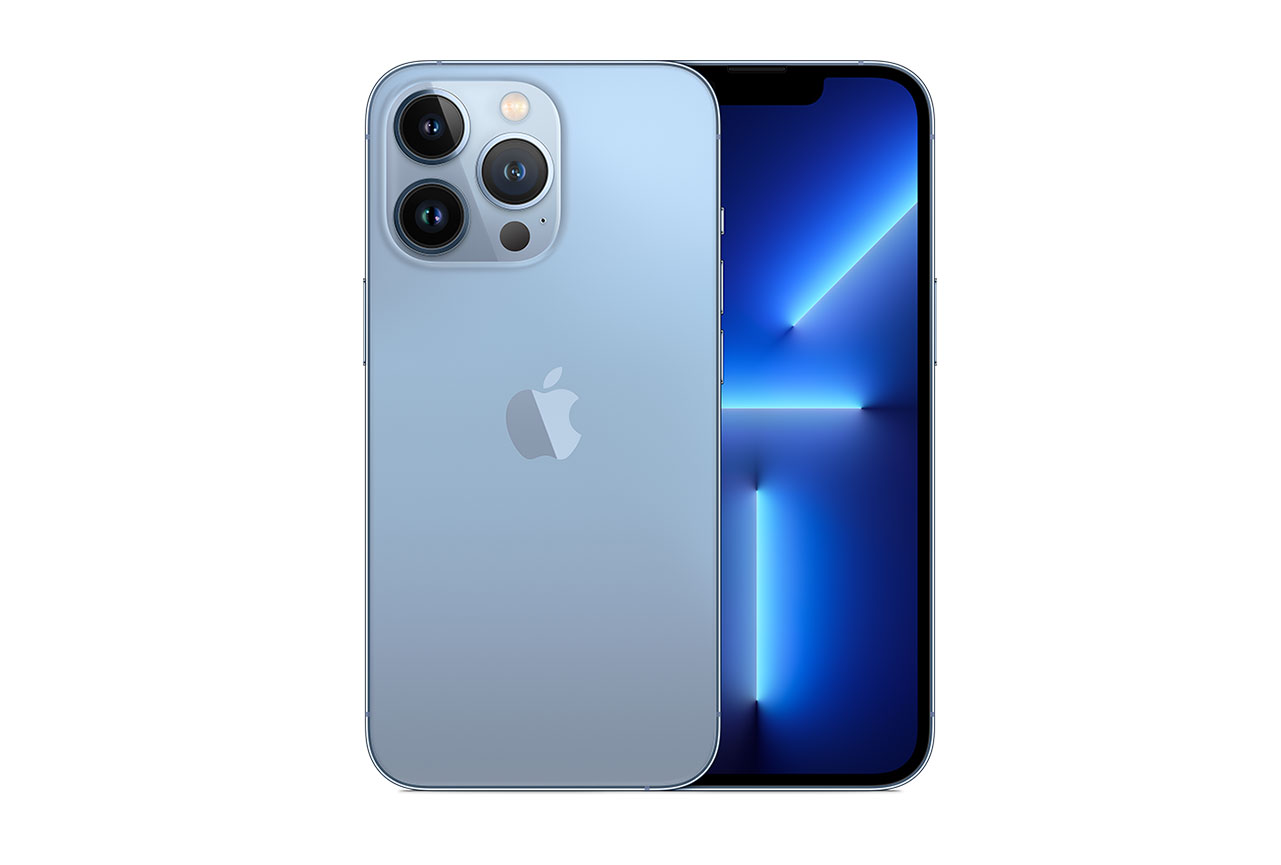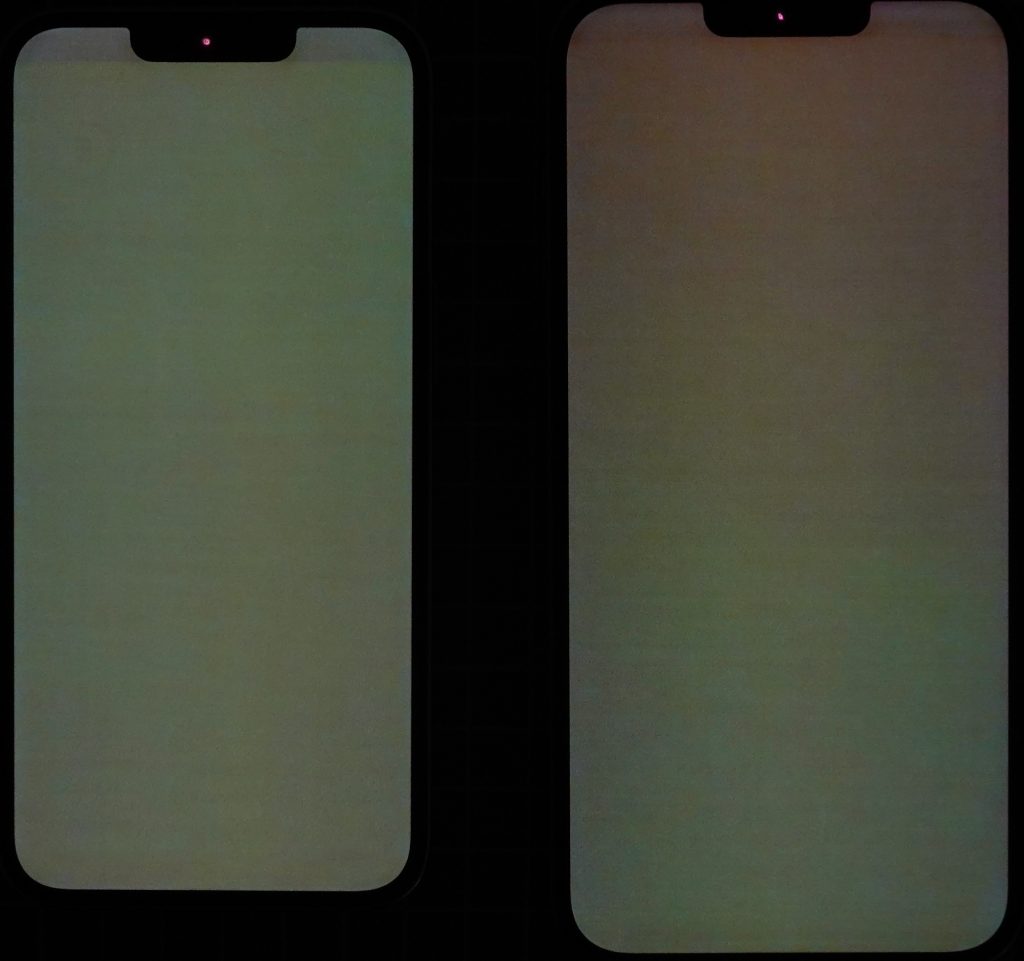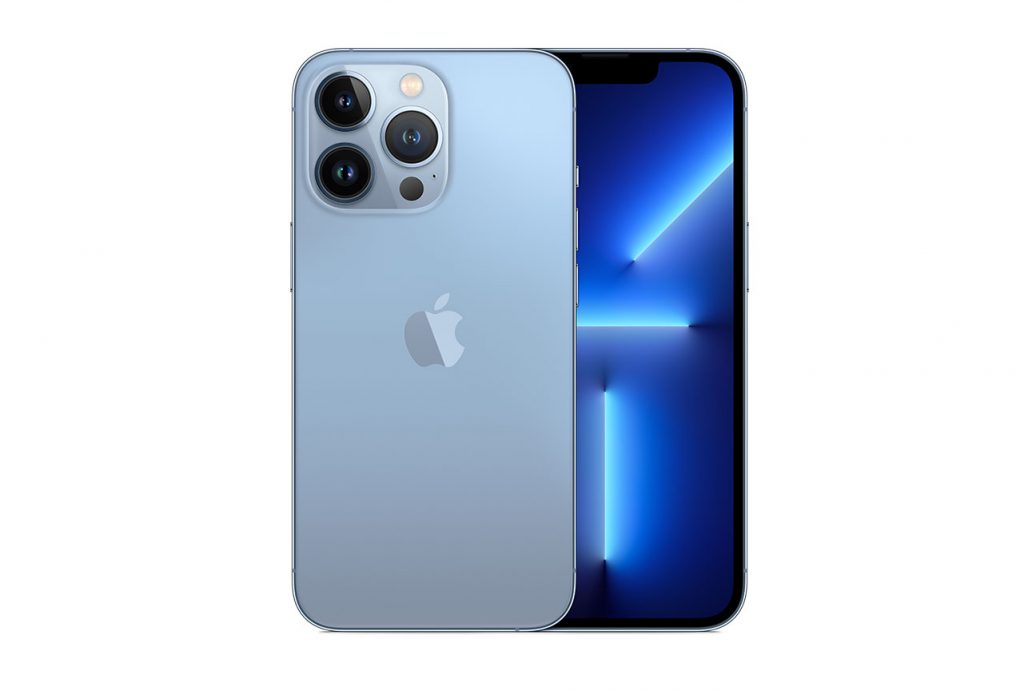The Apple iPhone 13 Pro arrived on the market along with the rest of the iPhone 13 line in September 2021. Apart from a smaller screen, the 13 Pro otherwise shares the same features as the iPhone 13 Pro Max, and put in a similar performance in our Display protocol tests. This short review will focus on the almost negligible differences between the two models.
Key display specifications:
- 6.1″ OLED display
- Dimensions: 71.5 x 146.7 x 7.65 mm (2.82 x 5.78 x 0.30 inches)
- Resolution: 2532 x 1170 (460 ppi)
- Aspect ratio: 19.5:9 ratio
- Maximum refresh rate: 120 Hz
- Chipset: A15 Bionic
About DXOMARK Display tests: For scoring and analysis in our smartphone and other display reviews, DXOMARK engineers perform a variety of objective and perceptual tests under controlled lab and real-life conditions. This article highlights the most important results of our testing. Note that we evaluate display attributes using only the device’s built-in display hardware and its still image (gallery) and video apps at their default settings. (For in-depth information about how we evaluate smartphone and other displays, check out our articles, “How DXOMARK tests display quality” and “A closer look at DXOMARK Display testing.”)
Test summary
Scoring
Sub-scores and attributes included in the calculations of the global score.
 Apple iPhone 13 Pro
Apple iPhone 13 Pro

141
display
147
Samsung Galaxy S24 Ultra
Best: Samsung Galaxy S24 Ultra (164)
131
Google Pixel 8
Best: Google Pixel 8 (165)
145
Samsung Galaxy S25 Ultra
Best: Samsung Galaxy S25 Ultra (167)
137
Google Pixel 7 Pro
Best: Google Pixel 7 Pro (164)
Please be aware that beyond this point, we have not modified the initial test results. While data and products remain fully comparable, you might encounter mentions and references to the previous scores.
Position in Global Ranking

56
th
1. Samsung Galaxy S25 Ultra
160
8. Samsung Galaxy S24 Ultra
155
9. Samsung Galaxy Z Fold6
154
9. Samsung Galaxy S24+ (Exynos)
154
9. Samsung Galaxy S24 (Exynos)
154
16. Google Pixel 9 Pro Fold
152
17. Apple iPhone 15 Pro Max
151
22. Apple iPhone 16 Pro Max
150
22. Samsung Galaxy Z Flip6
150
29. Samsung Galaxy S23 Ultra
148
35. Samsung Galaxy A55 5G
147
38. Apple iPhone 14 Pro Max
146
40. Samsung Galaxy S24 FE
145
44. Samsung Galaxy Z Flip5
144
46. Asus Zenfone 11 Ultra
143
46. Samsung Galaxy A35 5G
143
51. Apple iPhone 13 Pro Max
142
51. Samsung Galaxy Z Fold5
142
57. Samsung Galaxy S23 FE
140
62. Xiaomi Redmi Note 14 Pro+ 5G
139
63. Honor Magic4 Ultimate
138
74. Samsung Galaxy S22 Ultra (Snapdragon)
135
74. Xiaomi Redmi Note 13 Pro Plus 5G
135
79. Samsung Galaxy S22+ (Exynos)
134
82. Samsung Galaxy Z Flip4
133
82. Samsung Galaxy S22 Ultra (Exynos)
133
82. Samsung Galaxy S22 (Snapdragon)
133
82. Vivo X80 Pro (MediaTek)
133
87. Samsung Galaxy S22 (Exynos)
132
92. Samsung Galaxy S21 Ultra 5G (Exynos)
131
92. Vivo X80 Pro (Snapdragon)
131
96. Samsung Galaxy Z Fold4
130
96. Samsung Galaxy S21 Ultra 5G (Snapdragon)
130
96. Samsung Galaxy S21 FE 5G (Snapdragon)
130
107. Samsung Galaxy A54 5G
129
111. Apple iPhone 12 Pro Max
127
115. Vivo X60 Pro 5G (Snapdragon)
126
132. Motorola Edge 30 Pro
123
136. Apple iPhone 11 Pro Max
122
136. Motorola Edge 40 Pro
122
140. Apple iPhone SE (2022)
120
146. Samsung Galaxy A52 5G
114
148. Motorola Razr 40 Ultra
113
151. Crosscall Stellar-X5
109
152. Samsung Galaxy A53 5G
108
156. Crosscall Stellar-M6
101
159. Samsung Galaxy A22 5G
82
Position in Ultra-Premium Ranking

41
st
1. Samsung Galaxy S25 Ultra
160
6. Samsung Galaxy S24 Ultra
155
7. Samsung Galaxy Z Fold6
154
7. Samsung Galaxy S24+ (Exynos)
154
12. Google Pixel 9 Pro Fold
152
13. Apple iPhone 15 Pro Max
151
17. Apple iPhone 16 Pro Max
150
17. Samsung Galaxy Z Flip6
150
22. Samsung Galaxy S23 Ultra
148
29. Apple iPhone 14 Pro Max
146
33. Samsung Galaxy Z Flip5
144
35. Asus Zenfone 11 Ultra
143
38. Apple iPhone 13 Pro Max
142
38. Samsung Galaxy Z Fold5
142
44. Honor Magic4 Ultimate
138
51. Samsung Galaxy S22 Ultra (Snapdragon)
135
53. Samsung Galaxy S22+ (Exynos)
134
55. Samsung Galaxy Z Flip4
133
55. Samsung Galaxy S22 Ultra (Exynos)
133
55. Vivo X80 Pro (MediaTek)
133
62. Samsung Galaxy S21 Ultra 5G (Exynos)
131
62. Vivo X80 Pro (Snapdragon)
131
66. Samsung Galaxy Z Fold4
130
66. Samsung Galaxy S21 Ultra 5G (Snapdragon)
130
74. Apple iPhone 12 Pro Max
127
87. Apple iPhone 11 Pro Max
122
89. Motorola Razr 40 Ultra
113
Pros
- The device ensures a proper readability of pictures, indoors and outdoors.
- HDR10 content is well managed, with proper brightness, high contrast, and good color management.
- The device feels smooth and no frame drops are visible.
- Colors are maintained when the device is viewed on angle.
Cons
- Brightness is too low in low-light conditions for photos in the gallery, web pages, and SDR video content.
- The device sometimes shows a yellow cast.
- The blue light filter has a strong impact on color.
The Apple iPhone 13 Pro came in just a point behind the Apple iPhone 13 Pro Max, which is currently the top-ranked phone in our Display protocol database.
Only very slight differences separated the two smartphones. On the one hand, the iPhone 13 Pro’s color rendering of images viewed in indoor conditions showed a slightly more orange cast than seen on the 13 Pro Max, as illustrated below:
Indoor color: Apple iPhone 13 Pro (top), Apple iPhone 13 Pro Max (bottom)
(Photo credit: DXOMARK; for illustration only)
On the other hand, the iPhone 13 Pro’s display had better color uniformity across the entire screen than the Pro Max, as seen below:
Color uniformity: Apple iPhone 13 Pro (left), Apple iPhone 13 Pro Max (right)
(Photo credit: DXOMARK; for illustration only)
For all other attributes, the two iPhone 13 models performed identically; and in fact, the only reason the 13 Pro comes in just behind the 13 Pro Max is that the 13 Pro has a smaller screen-to-body ratio.
For more detailed information about the iPhone 13 Pro’s performance, please see our review of the Apple iPhone 13 Pro Max here.
 Apple iPhone 13 Pro
Apple iPhone 13 Pro


 56th
56th
 41st
41st





DXOMARK encourages its readers to share comments on the articles. To read or post comments, Disqus cookies are required. Change your Cookies Preferences and read more about our Comment Policy.